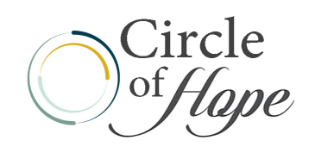
Substance abuse is a major problem in the United States. The opioid addiction crisis has been receiving significant attention in recent years as the magnitude of the problem and the number of fatal overdoses reach dramatic levels. Both prescription opioids and illicit drugs are commonly abused. The crisis has resulted in a multi-faceted approach that includes the education of physicians, the regulation of prescription drugs, and the increased availability of naloxone, an opioid antagonist that can reverse overdoses.
Though opioids get lots of attention, the abuse of alcohol and stimulants is also a cause for concern. One intervention that has proven to be effective in improving outcomes for individuals struggling with addiction has been medication-assisted treatment.
What Is Medication-Assisted Treatment or MAT?
Medication-assisted treatment is a combination of medication, counseling, and behavioral therapy. MAT employs medication to reduce cravings for their substance of choice. However, it doesn’t replace one addiction with another. During treatment, individuals undergo counseling and behavioral therapy to get to the root of their addiction and learn how to live a sober life.
The medication just makes it easier to deal with withdrawal symptoms and/or cravings. MAT isn’t right for everyone but for many people, it’s the best option. If you think you or someone you love could benefit from this type of treatment, talk to a medical professional to find out which options are best.
What Does MAT Therapy Work For?
The primary uses for medication-assisted treatment are alcohol, stimulant, and opioid abuse.
Alcohol Detox
MAT therapy can help fight the withdrawal symptoms that are typically associated with alcohol addiction. These include sweating, shivering, nausea, vomiting, insomnia, anxiety, and slow movements or thoughts. Medication-assisted treatment can be very helpful for individuals who were unable to achieve and maintain sobriety with psychosocial treatments alone.
MAT for Alcohol: Vivitrol vs Antabuse
Antabuse (disulfiram) and Vivitrol (naltrexone) are the two medications most used to treat chronic alcoholism. However, they are different types of drugs. Disulfiram is an alcohol antagonist while naltrexone is an opioid antagonist. Disulfiram works by preventing the liver from breaking down acetaldehyde. If an individual on this drug uses alcohol, they will experience negative side effects such as:
- Headache
- Blurred vision
- Difficulty breathing
- Nausea or vomiting
- Chest pain
- Weakness
- Anxiety
- Confusion
- Sweating
Even small amounts of naturally occurring alcohol can lead to mild symptoms if you’re on disulfiram.
Meanwhile, naltrexone is intended for people who don’t want to abstain from alcohol right away. People who take naltrexone don’t get any pleasure from drinking or even binging. However, they don’t experience negative side effects if they consume alcohol. The thinking is that the individual will eventually stop drinking since the activity is no longer linked to their brain’s rewards system.
Opioid Detox
When people think about the medications used for assisted treatment for substance use disorders, they often think about those used for opioid addiction. People who are detoxing from opioids can experience nausea, vomiting, diarrhea, tremors, insomnia, muscle pain, and rapid heart rate. MAT for opioids can involve the use of methadone, buprenorphine, or naltrexone.
Methadone
Methadone has been used to treat opioid addiction since the 1960s. It reduces the severity of withdrawal symptoms while also blocking the effects of other opioids. It does this by binding to the opioid receptors in the brain. Doctors usually start patients off with a low dose of around 10 milligrams per day so their bodies can get accustomed to a new drug.
The dosage is then increased by 5 or 10 mg per day until the withdrawal symptoms are under control. The maximum dosage each individual will need depends on the severity of the addiction but most people end up needing around 40 mg per day.
Buprenorphine
Buprenorphine is another opioid that can be used to treat opioid addiction. At low doses, it acts as a partial opioid agonist and provides pain relief. At higher doses, the effects plateau and it acts as an opioid agonist. Therefore, individuals who use it don’t experience euphoria, but their withdrawal symptoms are kept at bay.
Buprenorphine is often mixed with a strong opioid antagonist called Naloxone to create a drug called Suboxone. This is designed to prevent individuals from injecting buprenorphine to achieve a high. If Suboxone is misused, it can cause nausea and vomiting, drowsiness, dizziness, low blood pressure, excessive sweating, and even memory loss.
Naltrexone
Unlike buprenorphine and methadone, naltrexone is not an opioid. It prevents opioids like morphine, heroin, and codeine from having euphoric or sedative effects by binding to and blocking the opioid receptors. It also suppresses opioid cravings. Naltrexone is not addictive and individuals don’t experience withdrawal symptoms when they stop using it.
Stimulant Detox
Individuals who are detoxing from stimulants such as methamphetamine, cocaine, and Ritalin experience both mental and physical withdrawal symptoms. However, the most severe are the mental effects which can include anxiety, depression, and suicidal thoughts.
The United States Food and Drug Administration has not yet approved any medications for the treatment of stimulant dependence or withdrawal. However, there are a number of drugs being studied for this purpose and there will be emerging forms of medication therapy.
Some of the medications under consideration are:
- Naltrexone – Naltrexone can be used in medication-assisted treatment programs for both alcohol and opioids. It may block cravings for meth.
- Bupropion – This is an antidepressant that causes effects similar to those of meth. It could help with both withdrawal and the effects of meth abuse on the brain.
- Modafinil – This is a stimulant drug that also has a similar effect to meth. It may help alleviate withdrawal symptoms and improve brain function.
- Topiramate – Topiramate improves the production of GABA in the brain, thereby promoting feelings of relaxation and potentially curbing meth cravings.
Am I Eligible for MAT Therapy?
If you’ve tried unsuccessfully to quit using opioids or alcohol, you may be thinking that medication-assisted treatment would improve your chances of success. Easing withdrawals through medication assistance has been proven to be successful for many people but addiction treatment always needs to be customized to the needs of the client.
The best way to determine if you are eligible for this type of therapy is to talk to a doctor or addiction treatment professional. You can also reach out to a drug treatment facility like Circle of Hope Rehab to find out what would be the most appropriate option for you. Keep in mind that if you undergo MAT as a component of addiction treatment, you also need to be willing to participate in therapy.
Drawbacks to Medication-Assisted Treatment
Even though MAT offers several benefits, it also has some disadvantages. For example, patients often need to be closely supervised by medical professionals at a certified facility. This isn’t feasible for every individual who is dealing with substance addiction. In addition, the medications are strong and they may have unwanted side effects. When opioid drugs are used, there may also be the potential for misuse and abuse.
Critics of medication-assisted treatment also point to the risk of patients trading one addiction for another. They advocate for an abstinence-based approach to treating drug and alcohol addiction. However, MAT allows for more successful recovery outcomes. The medications used are safer than the alternatives and individuals can slowly taper off their dosage under medical supervision. This reduces the likelihood of dangerous withdrawal symptoms and limits cravings, thereby helping to prevent relapse.
Talk to the Team at Circle of Hope Rehab About Medication-Assisted Treatment
For decades, individuals have relied on medication assistance for long-term recovery. Today, it is seen as one of the most effective ways to get individuals back on their feet. While therapy and counseling have an important role to play in achieving and maintaining sobriety, the addition of approved medications can make a significant difference in the lives of many people struggling with drug or alcohol addiction.
If after reading this article you think that MAT may be right for you or someone you love, you need to talk to an addiction specialist. Not only will this provide you with an opportunity to learn more about this treatment modality but you can ask any questions you have about substance abuse treatment. If you’re looking to wean yourself off of opioids or alcohol, you should consider treatment providers who offer MAT as an option.
At Circle of Hope Rehab, we offer MAT in conjunction with several other evidence-based treatment options such as cognitive-behavioral therapy; dialectical behavioral therapy; and individual, group, and family therapy. All you need to do is call us to have a chat about your needs and what we offer.
